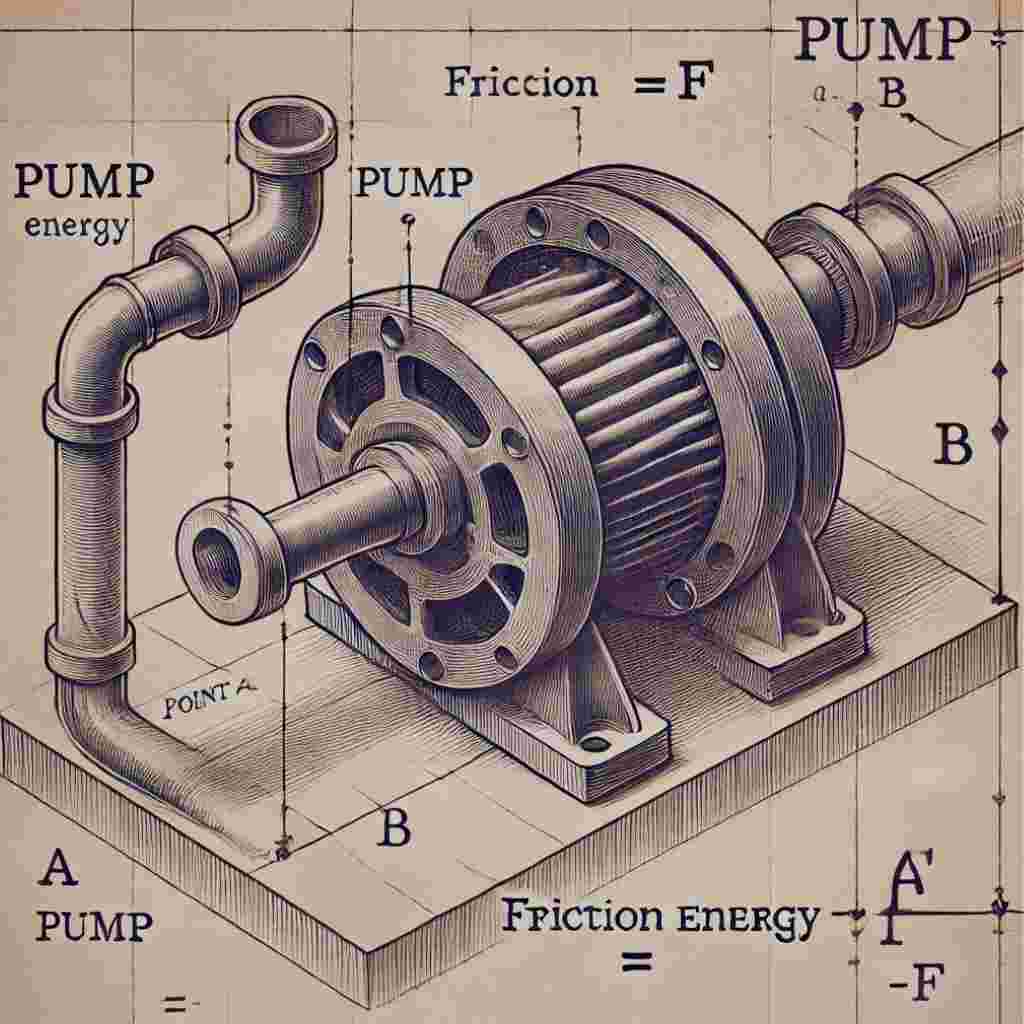Reynolds Number and Bernoulli’s Theorem
In fluid mechanics, Reynolds Number and Bernoulli’s Theorem are fundamental concepts that help us understand and predict the behavior of fluids in motion. These principles are widely applied in pharmaceutical engineering, especially in processes like fluid transport, filtration, and mixing.
1. Reynolds Number
Definition
The Reynolds Number (Re) is a dimensionless quantity used to predict the flow regime of a fluid—whether it is laminar, turbulent, or in a transitional state. It is defined as the ratio of inertial forces to viscous forces in a fluid.
- ρ (rho) = Density of the fluid (kg/m³)
- v = Velocity of the fluid (m/s)
- D = Diameter of the pipe or characteristic length (m)
- μ (mu) = Dynamic viscosity of the fluid (Pa·s or N·s/m²)
Flow Classification Based on Reynolds Number:
- Re < 2000: Laminar Flow (Smooth, orderly flow)
- 2000 ≤ Re ≤ 4000: Transitional Flow (Unstable, can switch between laminar and turbulent)
- Re > 4000: Turbulent Flow (Chaotic, mixed flow)
Flow Regimes
- Laminar Flow (Re < 2000): Smooth, orderly flow with layers of fluid moving parallel to each other.
- Transitional Flow (2000 < Re < 4000): Unstable flow with intermittent turbulence.
- Turbulent Flow (Re > 4000): Chaotic flow with eddies and vortices.
Applications in Pharmaceuticals
- Design of Pipelines: Helps determine the optimal diameter and flow rate for transporting liquids (e.g., syrups, suspensions) in manufacturing units.
- Mixing of Fluids: Ensures efficient mixing of drugs and excipients by predicting flow behavior.
- Filtration Systems: Used to design filters that operate efficiently under laminar or turbulent flow conditions.
Example
In a pharmaceutical plant, a liquid drug with a density of 1000 kg/m³ and viscosity of 0.001 Pa·s flows through a pipe of diameter 0.02 m at a velocity of 1 m/s. The Reynolds number is calculated as:
Reynolds Number Calculation
Re = 1000 × 1 × 0.02 / 0.001 = 20,000
Since ( Re > 4000 ), the flow is turbulent, which may require adjustments to the pipeline design to reduce energy losses.
2. Bernoulli’s Theorem
Definition
Bernoulli’s Theorem states that in an ideal fluid (incompressible, non-viscous, and flowing steadily), the total mechanical energy (sum of pressure energy, kinetic energy, and potential energy) remains constant along a streamline.

Where:
- P = Pressure energy (Pa)
- \frac{1}{2} \rho v^2 = Kinetic energy per unit volume (Pa)
- \rho g h = Potential energy per unit volume (Pa)
Applications in Pharmaceuticals
- Venturi Meter: Used to measure the flow rate of liquids in pipelines.
- Design of Spray Nozzles: Ensures uniform spraying of liquid drugs or coatings.
- Pumping Systems: Helps calculate the pressure required to transport fluids through pipes.
- Aerosol Formulations: Used to design devices that deliver drugs in the form of fine mists.
Example
Consider a liquid drug flowing through a horizontal pipe with a constriction.
Point A:
- Pressure, P1 = 100,000 Pa
- Velocity, v1 = 2 m/s
- Height, h1 = 0 m
Point B (Constriction):
- Velocity increases to v2 = 5 m/s
Applying Bernoulli’s Equation:
P1 + (1/2) ρ v12 = P2 + (1/2) ρ v22
Substituting Values:
100,000 + 2000 = P2 + 12,500
P2 = 102,000 – 12,500 = 89,500 Pa
Conclusion:
The pressure at the constriction decreases, which is a key principle used in devices like Venturi meters.
Key Takeaways
- Reynolds Number predicts whether fluid flow is laminar, transitional, or turbulent, which is crucial for designing efficient pharmaceutical systems.
- Bernoulli’s Theorem helps analyze energy conservation in fluid flow, enabling the design of devices like Venturi meters and spray nozzles.
- Both concepts are essential for optimizing processes like fluid transport, mixing, and filtration in pharmaceutical manufacturing.
